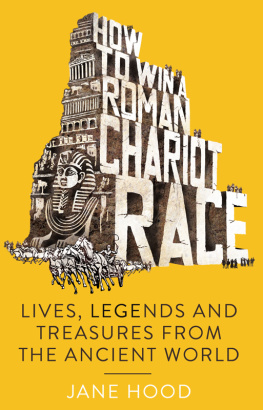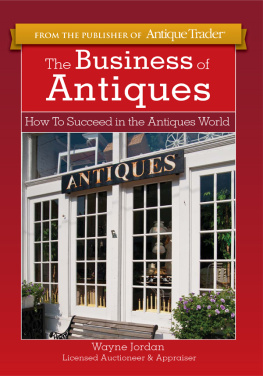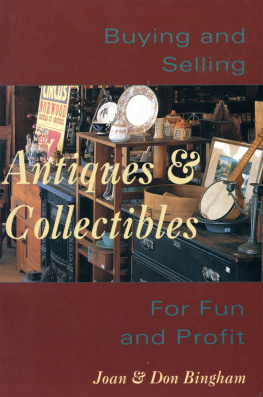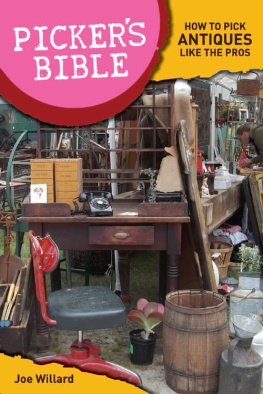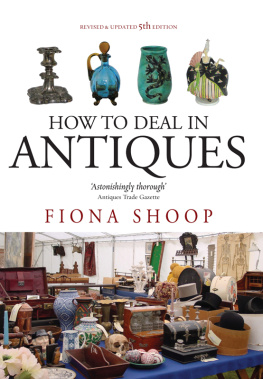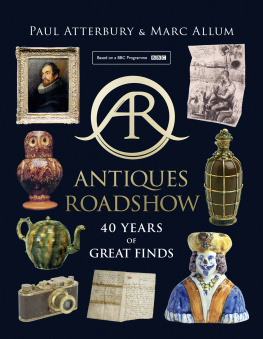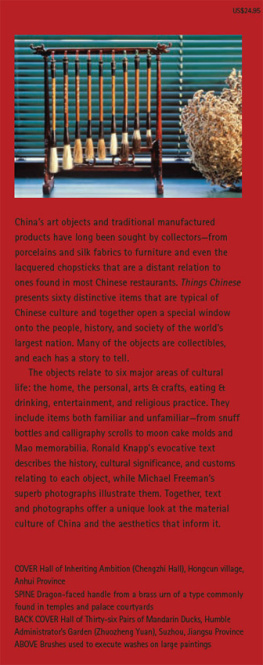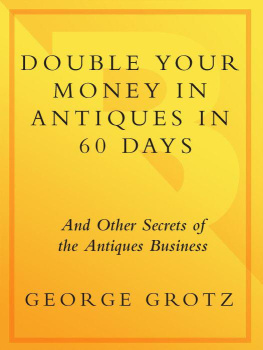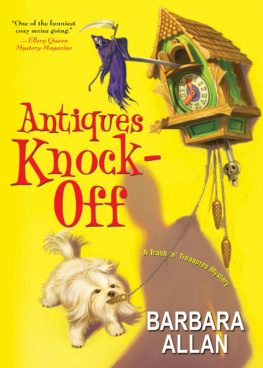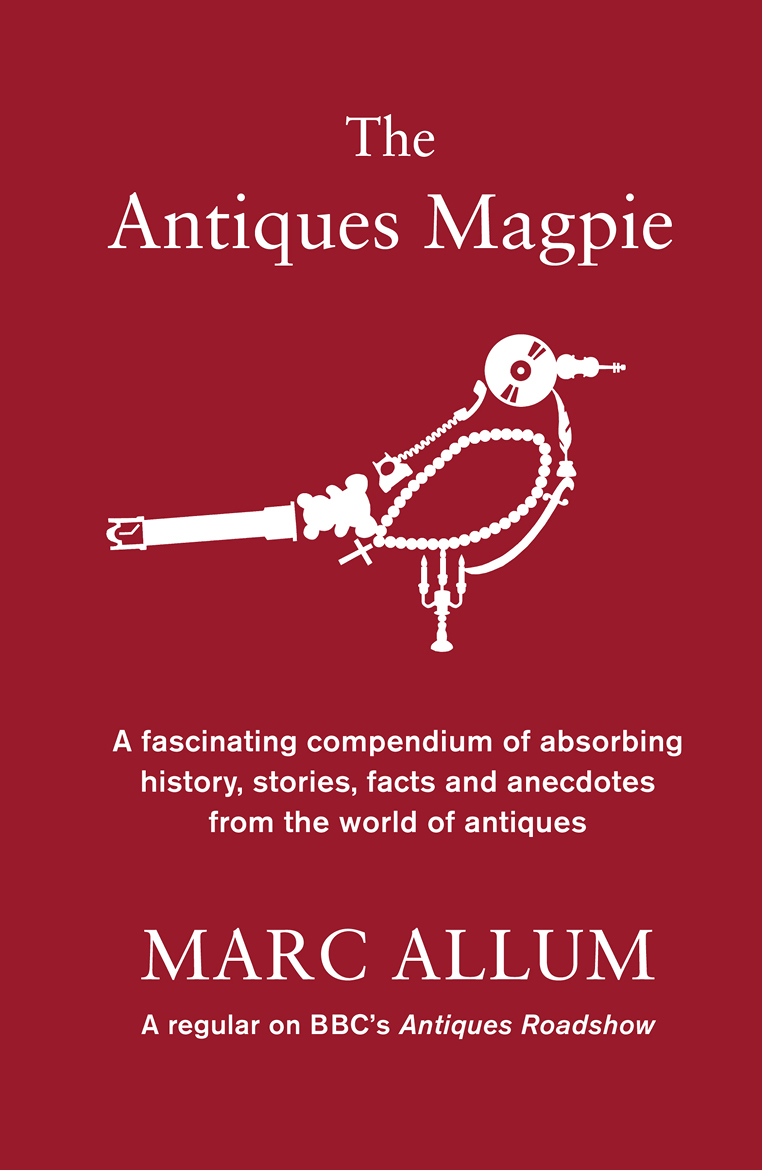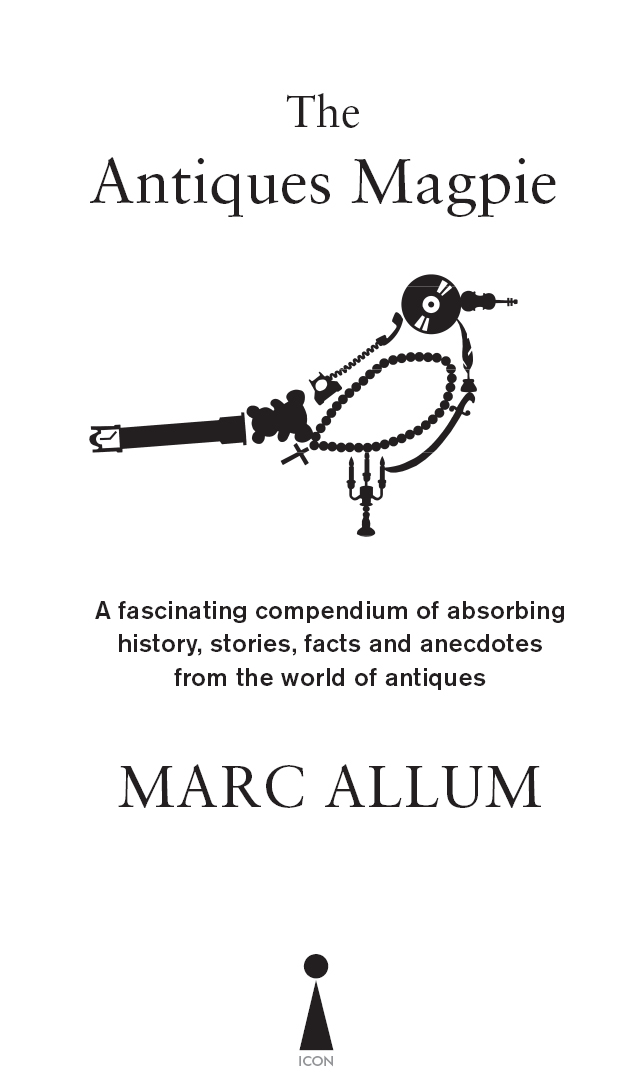Marc Allum is a freelance art and antiques writer, broadcaster, consultant and lecturer based in Wiltshire. He has been a miscellaneous specialist on the Antiques Roadshow since 1998 and has appeared on several other television and radio programmes. Marc spent sixteen years as a London-based auctioneer and has written and contributed to numerous books. He writes regularly for magazines and has a passion for playing the bass guitar and tinkering with large engines.
INTRODUCTION
antique, n.
a collectable object such as a piece of furniture or work of art that has a high value because of its age and quality
magpie, n. and adj.
B.adj. (attrib.)
Magpie-like: with allusion to the birds traditional reputation for acquisitiveness, curiosity, etc.; indiscriminate, eclectic, varied.
Oxford English Dictionary
[Authors note: In my opinion high value is not a definitive reason for an object being of antique status.]
We are by nature acquisitive. We all collect. Its not something that is always physically manifested in the sense of a stamp album or a collection of Pre-Raphaelite paintings. You can collect just about anything, even quite intangible things like thoughts. I cant remember jokes but I have a friend who is a walking anthology. Its all in his head; hes a collector of humour.
Collecting is complicated, an infusion of many variables drawn from our fragility, insecurity and desire, driven by the need to leave a mark on the world, validate, educate and elucidate. For some, it simply complicates matters; we are, after all, just temporary custodians with a limited period of time with which to play out our acquisitive tendencies, unlike the great museums and institutions, which offer a comforting permanence.
Ill try to keep it as real as possible but within these pages youll have to deal with various notions that might at first seem surprising. You thought that you were buying a book about antiques, and you are, but its all much more complicated than it first appears, mainly because what is tangible in the world of art and antiques is often just a physical manifestation of something far more ephemeral and more likely based on historical interpretations of religion, death, science and fashion. Thats why youll find some rather esoteric headings such as Mythical Objects and The First Museums. These will hopefully help to put our (and by our Im referring to the human race as a whole) acquisitive habits and idiosyncratic accumulative tendencies into perspective.
We need history, it gives us a sense of worth, solid points of reference along which to place the milestones of time, a ledger of the lessons we continually fail to learn. These milestones are the buildings, the bones, the photographs, the middens, the flint arrowheads and the golf ball on the moon. We need memories, and these objects form the bridges in time that reinforce our souvenirs.
I started collecting as a youngster, probably around the age of nine. There was an innocence to the pursuit at that tender age, one that I miss. As you get older you acquire more and more emotional baggage, more life experience and it forces you to readdress the way you look at life and artefacts. This can be a trap for the serious collector, as mortality and objects are closely associated. As a boy, I would leave home on my bicycle, a spade strapped to the crossbar, cycle several miles and spend hours digging an old bottle dump. The dark, cinder-blackened earth that characterised 19th-century dumps belied the potential treasures that I eagerly sought: the Cods and Hamiltons (types of bottles) that I loaded into my fathers old canvas rucksack ready for the long slog home. I washed them in a plastic bowl in the garden, scoured off the rust stains and arranged them on shelves in my bedroom.
Now, its different. As I grew older, the objects began to acquire voices; they started to speak to me. The bottles were no longer inanimate objects fashioned from silica, sodium carbonate and lime. My desire to acquire objects with louder voices grew, and instead of mineral water and sauce bottles I wanted 18th-century claret bottles resplendent with seals. Now I wanted to know who had owned them. And there you have it; I had caught the disease that is antiques. There is no known cure.
Marc Allum, 2013
All art is useless.
Oscar Wilde, The Picture of Dorian Gray
MYTHICAL OBJECTS
Objects are what matter. Only they carry the evidence that throughout the centuries something really happened among human beings
Claude Levi Strauss
Its easy for us. With centuries of research and archaeology behind us, and with the marvellous resources of museums and institutions now at our disposal, we are to a great extent able to find out what most things are, or we at least have the foresight to save things for future generations to re-examine. We live for history and, consequently, history lives for us. Thats not to say that we arent constantly discovering new things about history and objects; its just that we have a great accumulated knowledge at our disposal.
Imagine when things were different and a person going about their everyday life a 15th-century serf for example had absolutely no idea what a fossil was. When your daily existence revolves around a few important precepts such as God, eating to stay alive and paying your tithes, its not difficult to see how your Christian view of the world might have been steadfastly instilled in your head to discount any notion of an alternative other than the sure-fire stone depictions of Purgatory and Hell carved around your local church door. So, what did the serf think a fossil was? Its an idea that grew in my head many years ago, taking objects from prehistory and antiquity and trying to find out what people thought they were, as opposed to what we now know them to be.
As a consequence of this fascination, the Enlightenment room in the British Museum is one of my favourite spaces in the entire world. Admittance should be strictly limited to people wearing 18th-century dress. Gazing at the wondrous objects in the cases is as close as its possible to come to the individuals who formed our understanding of the world and the objects in it. Here you can gaze upon Dr John Dees (15271608/9) obsidian mirror, an Aztec artefact used by the famous occultist and consultant to Elizabeth I to summon spirits. Dee, like many intellectuals, tried to reconcile the divide between science and magic; these are some of the most enigmatic display cases in museum history and you too can absorb the energy of these powerful artefacts. The once-mythical status of these objects imbues them with a special meaning for collectors. Here are a few of my mythical favourites:


